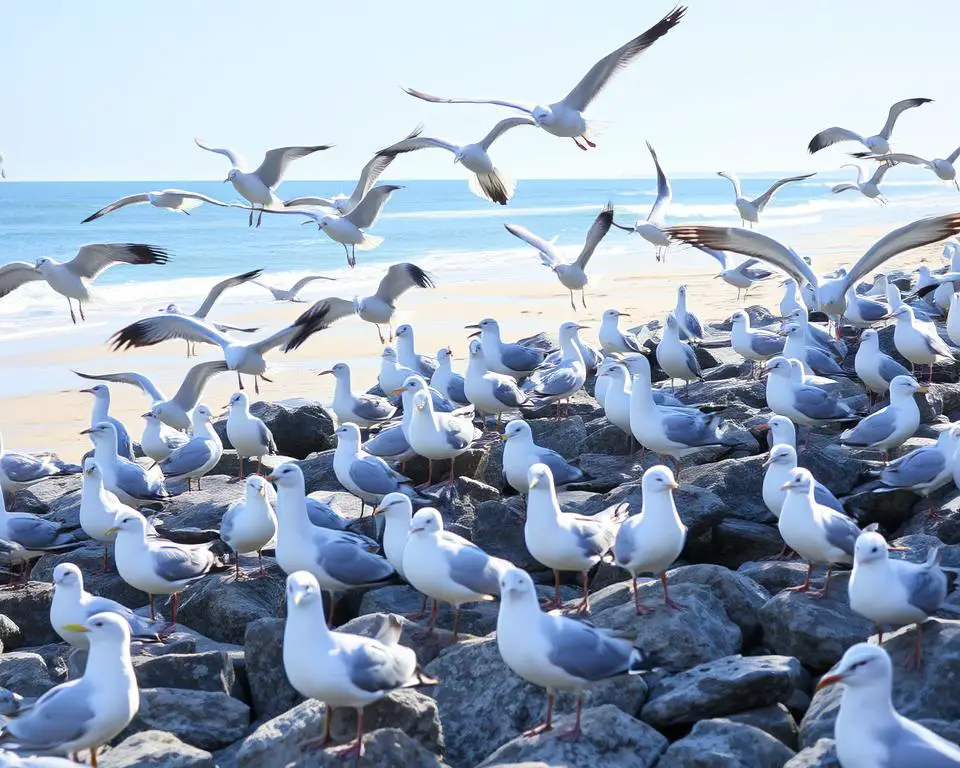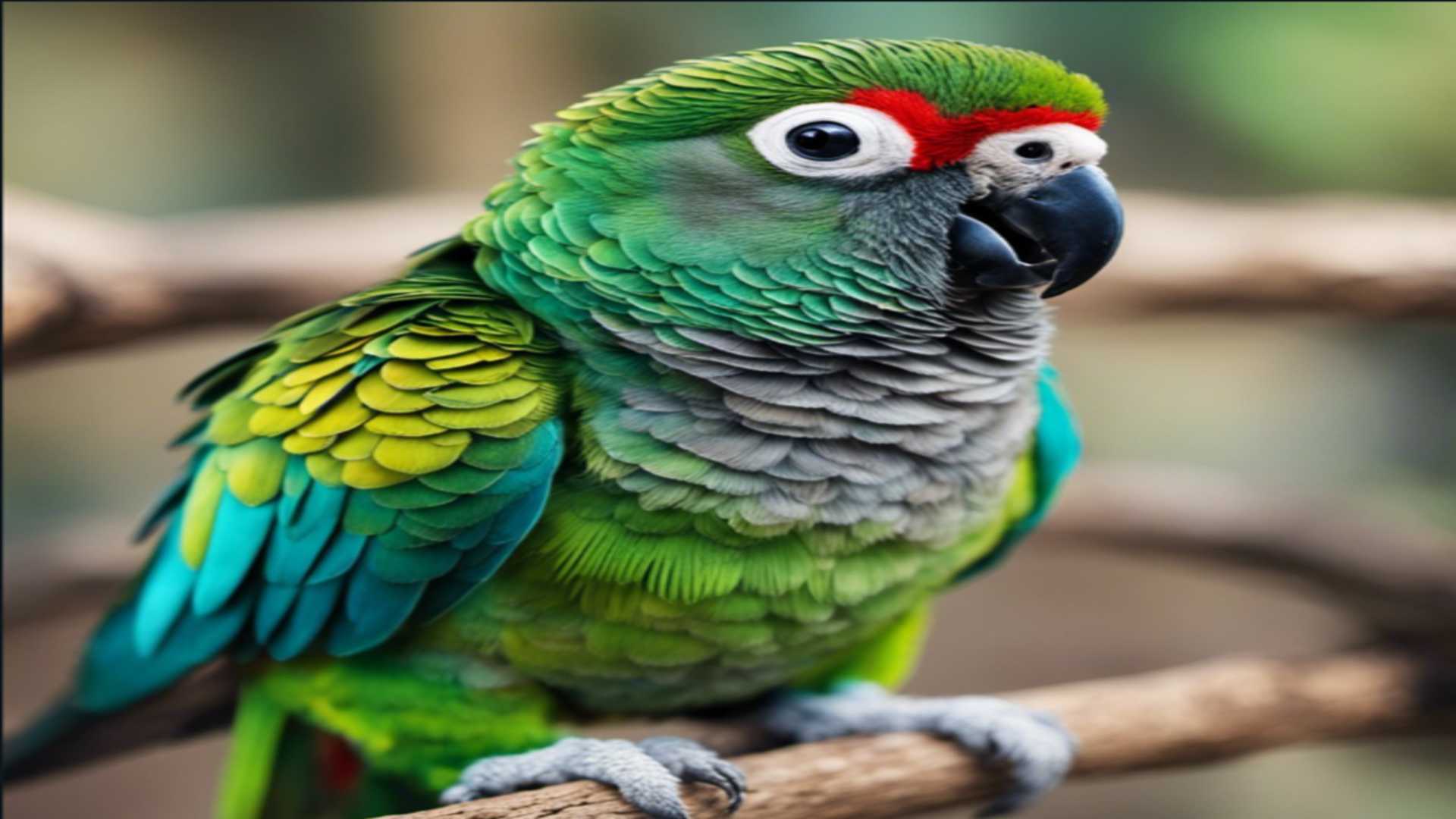Have you ever been walking along the beach or pier, perhaps carrying a snack of some kind, when nearby seagulls start to flock and squawk around you? It’s almost as if they’re aware that you have food. So, how do seagulls know when you have food?
They have keen eyesight and an excellent sense of smell, allowing them to detect food at long distances. They are also smart birds that recognize people’s habits, allowing them to figure out when they may have food.
For example, if you frequently eat lunch in the same spot, seagulls will soon learn this and be on the lookout for food when you come around. Seagulls also have a keen sense of smell and can detect food from long distances.
They are also adept at recognizing potential sources of food, such as open trash cans or a picnic basket left unattended.
Why do seagulls scream when they find food?
Seagulls scream when they find food as a way to communicate with other seagulls in the area.
This behavior, known as kleptoparasitism, helps them alert fellow birds to the presence of food. Seagulls have learned that making noise can attract more birds, increasing their chances of getting a share of the meal.
Can seagulls smell food?
Seagulls have a keen sense of smell and can detect food from great distances. Their highly developed olfactory senses allow them to locate and scavenge for food easily. When at the beach or near humans, seagulls can smell food, leading to their reputation for swarming around picnickers and beach-goers.
How far can seagulls smell food?
Seagulls can smell food from up to 12 miles away, thanks to their keen sense of smell. They are attracted to the scent of food, especially fish, and will quickly flock to areas where they detect it. This ability helps them find food sources both on land and at sea.
How do seagulls detect food?
Seagulls are adept scavengers, often seen hovering over beaches, docks, and parks in search of their next meal.
But how do seagulls detect food? These birds have a keen sense of sight and are able to spot potential food sources from great distances. Their sharp eyesight allows them to scan the ground and water for any signs of movement or potential prey. In addition to their exceptional vision, seagulls also rely on their sense of smell to locate food.
They are able to detect the scent of food from several miles away, making them highly efficient at finding sources of nourishment.
This keen sense of smell, combined with their sharp eyesight, allows seagulls to quickly hone in on potential food sources, such as fish, insects, or even human leftovers. Seagulls also have a unique feeding behavior known as “kleptoparasitism,” where they will steal food from other animals or even humans.
This behavior is often seen in coastal areas where seagulls will swoop down and snatch food right out of people’s hands or picnic baskets. So, the next time you’re enjoying a snack by the beach and notice a group of seagulls circling overhead, just remember that they are using a combination of sharp eyesight.
Why do seagulls like human food?
Seagulls have a keen instinct to recognize certain smells that indicate food, and this often leads them to humans who satisfy their cravings. They are opportunistic feeders who will eat anything they find. This includes garbage, insects, dead fish, and other birds’ eggs.
That said, human food is often easier for seagulls to access than natural food, so they may be drawn to areas that have a lot of human activity.
Can seagulls smell food?
Yes, seagulls have a very acute sense of smell. Seagulls have olfactory bulbs in their brain that allow them to detect smells through the air, allowing them to locate food sources even if they are not visible.
In fact, they are particularly attracted to specific odors such as:
- Landfill waste
- Breeding colony
- Fishing boat scraps
By using their superior sense of smell, seagulls can make the most of their resources and find sustenance without wasting energy flying long distances looking for food. It’s certainly an impressive ability!
How do seagulls find food?
Seagulls are adept scavengers and foragers and have evolved many strategies to find food. They use a combination of sight, smell, memory, and vocalizations to locate food sources.
They primarily use their keen eyesight to locate food. Seagulls will keep watching for anything edible from up high such as schools of fish in the ocean or garbage being thrown out on shore. When they spot something appetizing, they fly toward it and catch it in their beaks.
Why do seagulls scream when they find food?
Seagulls scream when they find food for a variety of reasons. First, screaming serves to alert other seagulls in the area of the food source. This is an instinctual response that helps them maximize their chances of finding a meal.
Second, seagulls use vocalizations to establish territory and ward off competitors. When they detect a new source of food, they may emit a loud shriek as an alarm signal warning others to stay away.
Third, some seagulls exhibit aggression by screaming when they’re eating or taking food to a nest. This is typically done to ward off predators or other birds that might scare their young.
Lastly, some scientists believe that seagull screams are part of courtship behavior and may serve as a way for females to locate potential mates. Either way, it’s clear that there are many complex social behaviors at work when it comes to the vocalizations of these birds.
Why are seagulls not scared of humans?
Seagulls have become accustomed to being around humans, as oftentimes, people have the habit of feeding them. This has led to seagulls losing their natural fear of humans, as they know that they are usually not in danger when they are around people.
Additionally, seagulls recognize certain areas of human activity where food is often available, such as beaches and piers. As a result, they may become bolder or even seek out human interaction to find something to eat.
Do seagulls eat everything?
Seagulls are known predominantly for their scavenging habits and for enjoying a variety of snacks from the beach. However, despite the impression they may give off, there are actually limits to what seagulls will eat.
While their diets may include fish, invertebrates, or carrion of other animals, there are some things that seagulls won’t indulge in. Hard objects like pebbles, fruit seeds, and pits usually get deposited right back on the beach again, as they cannot be digested by seabirds.
It is not unusual to find bones scattered around due to them being swallowed whole before regurgitating again. Even when it comes to seafood like clams, mussels, or crabs, often only the softer parts can be consumed, with the hard exterior discarded.
We may think that seagulls eat anything they find, but they are actually very discriminating diners!
Do seagulls prefer food touched by humans?
Seagulls may seem pesky, but they are fascinating creatures that can teach us a lot about human-animal interactions. These birds have shown a particular interest in food that humans have touched.
When given a choice between a piece of bread untouched or touched by a person, they will almost always choose the one touched by a human.
This means that seagulls have learned to associate humans with a food source over the years and have become accustomed to getting their meals from people.
This can be both beneficial and detrimental to humans. It’s great that seagulls know they can get food from us, but it can also cause issues when they become overly dependent on humans for their primary source of nutrition.
It is important to remember that seagulls should not rely on humans for their sustenance, as this can lead to problems with overpopulation in certain areas.
Summary
Before we move on to the conclusion, we’ve summarized this article into a short list of key points for you to remember:
- Seagulls don’t just fly around looking for food; they actively search for food items near humans.
- It is important to use caution when feeding animals, as this can lead to overpopulation in certain areas.
- These birds are scavengers, meaning they feed anything that’s left behind by others, including dead animals.
Conclusion
Ultimately, it is up to us to regulate our interactions with wildlife and use proper caution when feeding animals.
Seagulls present us with an interesting model to understand our relationship with animals and how we can work together to coexist peacefully. By learning more about their behavior, we can gain valuable insights into our own behaviors and how we interact with wildlife.
Want to learn more about seagulls?
Ready to boost your knowledge to the next level? If so, check out the articles below:
- 5 Foods Seagulls Can Swallow Whole (With Pictures)
- Can Seagulls and Pigeons Breed? (Explained For Beginners)
- Can Seagulls Eat Bread? (Explained)





